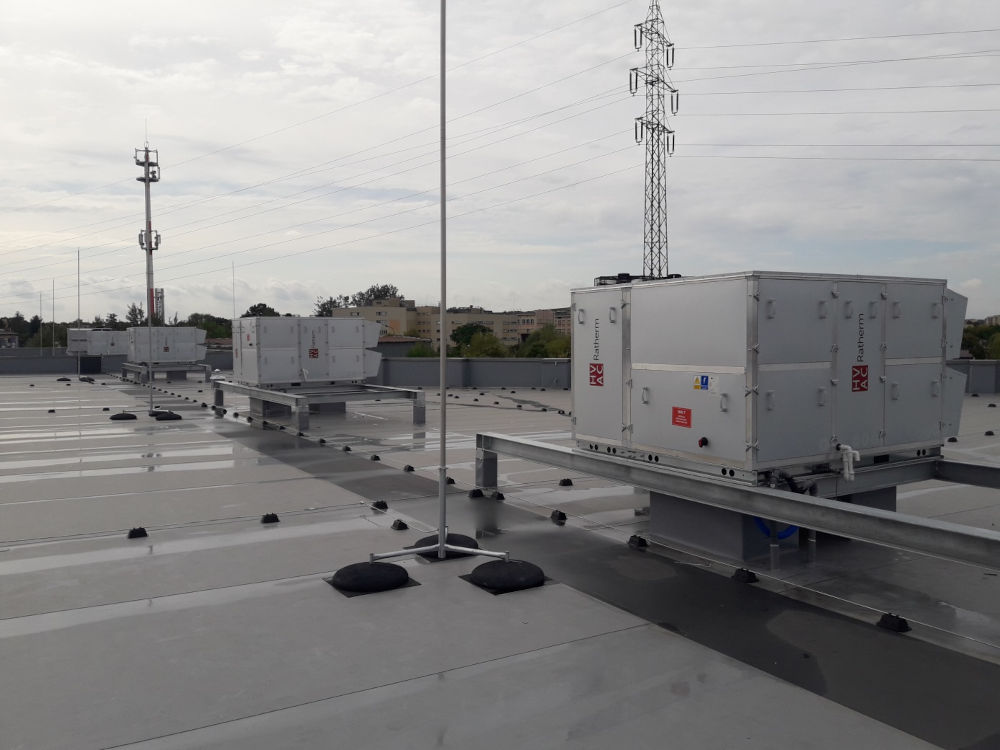
1.What are the features of a good air handling unit for large buildings such as retail, production or storage facilities?
The ultimate configuration of HVAC RATHERM AHUs depends on the individual requirements of the project owner or tenant. If you wish to place your AHUs outside or beside the building, the possibility of flexible configuration of outlets is required. Hence, our XK and XD series AHUs offer a full range of top (VV), bottom (UU) and front (HH) connections and their combinations. Where rooftop location is preferred, low weight and compact dimensions become an additional factor. Regardless of the type of a project, our AHUs can also ensure comfort by heating selected zones. In the heating process three basic operating modules are used: a heat recovery module, an optional mixing box, and a heating module in the form of a gas-fired, water or electric air heater. Each unit's operational capability is ensured by an integrated factory-installed plug&play automation system with an optional online management capability.2. Processing facilities may require that certain temperature and relative humidity are maintained. Could you tell us about solutions used for cooling, humidifying or dehumidifying?
For the cooling and dehumidifying in large buildings, we offer XD series units that incorporate specially designed independent and freely configurable cooling modules. Depending on the user's expectations, we use inverter or multi-stage cooling systems. For humidifying, on the other hand, we offer electric steam generators, which are supplied directly from the air handling units. The key to ensuring correct operation of such complex devices is a purpose-built automation application and monitoring of devices in the course of maintenance activities. In addition, for production facilities we suggest and offer, or even require, an online management capability to efficiently troubleshoot any reported issues with AHUs.3.What solutions make you particularly competitive in the challenging Polish market?
HVAC RATHERM is a services and engineering company offering customers a range of solutions, drawing on experience from nearly 200 projects involving large buildings. Following an initial inquiry, we prepare a quote aligned with the expectations, previous experiences and actual financial capabilities. We do not impose solutions on customers, who often construct tens of identical facilities. We are willing to deliver in accordance with the specifications of their building plans. To be able to compete successfully, we offer price flexibility and availability of most configurations for 4 out of 7 XK models straight from the warehouse. With unrestricted possibilities when it comes to the placement of duct connections and configuration of cooling modules, we can easily adapt to individual design requirements.4.Can you describe current trends or innovations that improve the efficiency, effectiveness and durability of AHUs?
From the beginning of our production story, we have been relying on EC fan technology, which guarantees low demand for electricity and low noise levels. Importantly, in the descriptions of AHUs we provide the real sound power of ZIEHL ABEGG fans, leaving the assessment of sound pressure level to discipline engineers. With support from leading suppliers of heat exchangers, including KLINGENBURG and RECUTECH, we are happy to evaluate any proposed solutions. HVAC RATHERM prefers to use rotary exchangers, because in the Central European climate the nominally highly efficient plate heat exchangers only theoretically ensure high efficiency. With efficiency of about 75–85%, we have observed problems with defrosting. For production processes, on the other hand, we suggest simpler cross-flow heat exchangers.Another change in recent years is the significant increase in facilities using gas-fired units. This is the reason for introducing a new standard for XG units equipped with highly efficient condensing modules. At the moment, about 50% of HVAC RATHERM units are equipped with modules with a capacity of 8 kW to 430 kW.
As for chiller units, we currently offer ready-made solutions with a capacity of up to about 200 kW. In the coming years, a complete shift from on-off compressors to inverter technology is expected. However, it is difficult to predict what the leading type of coolant will be in such new systems.


 mon-fri: 08.00 - 16.00
mon-fri: 08.00 - 16.00 ul. Agrestowa 3, 83-010 Rekcin
ul. Agrestowa 3, 83-010 Rekcin

